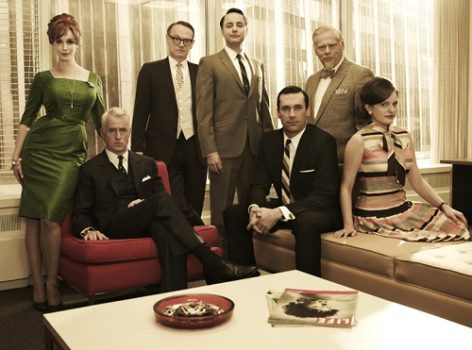It’s Time to Call a Truce Between Mad Men & Math Men
by Sonja Kroll on 22nd Dec 2015 in News

The advertising industry’s Mad Men (the creatives) and Math Men (the technologists) still can’t agree on one crucial question: are technology and data destroying the creative process? Advertising wouldn’t be effective without the creative ideas that power it and embed lasting memories of our favourite brands. But, in an ever-more distracted world, what good is the creative without technology and data to ensure the right people see it? Sarah Lawson Johnston (pictured below), managing director Europe at Mediaocean, writes about the powerful combination of creative and technology.
In their idolisation of the days when impassioned brainstorms and catchy jingles ruled the media landscape, Mad Men are missing a key point. Math Men have long since played an integral role in advertising, from providing data analysis and market research to help brands build more relevant messaging, to pioneering early campaign measurement. It is time to call a truce between Mad Men and Math Men by acknowledging that technology and creativity are undividable and equally vital.
So, how can the new allies combine the lure of attention-grabbing creative with innovative technological tools to ensure ads reach the right audience, at the right time?
 Making creative dynamic
Making creative dynamic
Dynamic creative brings greater scale and efficiency to creative advertising, delivering personalised messages to vast audiences using a powerful cocktail of consumer insight, previous interactions and external factors, such as location. Ads can be targeted to complement the weather, live events, and the constantly changing needs of consumers.
For example, Australian supermarket chain, Coles, combined customer data (such as purchasing preferences) with relevant in-store deals to serve 80 quintillion different programmatic ads weekly. This highly targeted campaign was undoubtedly reliant on compelling creative to capture consumer attention, but its success was also driven by the ability of real-time technology to match ads with 100% accuracy.
Connecting with digital video
Let’s bust the myth that programmatic trading is only for display ads – it isn’t. Automated technologies can be used to serve a range of innovative formats, including digital video. And with the online environment becoming increasingly oversaturated, creative formats, like video, are more important than ever to cut-through and connect with consumers. In fact, research shows that 70% of marketers find video content drives the most conversions and 64% of consumers are more likely to buy a product after watching a digital video.
To enhance engagement and interactions, brands must make digital video part of their ad campaigns. By embracing the technology that facilitates the real-time delivery of creative video content, they can achieve maximum impact and scale. Disney used this tactic to produce the most viral video ad of 2015 in a masterstroke of tailoring and simplicity. The video showed Disney characters shadowing unsuspecting shoppers in a US mall, with actions captured on hidden cameras — generating 3,757,909 shares, and counting.
Creative advertising across channels
Multi-device usage is now the norm and with programmatic technology, advertisers can build cohesive campaigns for every screen and format. The technology can also be used to attribute the consumer’s path to purchase across devices, enabling brands to understand whether their marketing interactions achieved the desired result.
Topshop, for example, was one of many brands that took to Twitter during London Fashion Week with its #livetrends campaign. Sending live tweets from the catwalks to six digital billboards, Topshop’s campaign seamlessly united multiple channels, including outdoor, digital, and in-store. By collating the data generated via consumer interactions with each channel, Topshop was able to determine that the campaign was a success — producing 3.8 million twitter engagements, 25% uplift in sales across all featured categories, and an increase in some categories of 75%.
Topshop’s campaign was a forward-thinking example of taking a creative concept and amplifying its effects using data and technology to make a real-time impact, and connect with a multi-screen audience.
When data and creativity collide, they make for an inspiring and unbeatable advertising experience that can cement lasting brand identity in seconds.
Ads like The Old Spice “The man your man could smell like” campaign are a testament to the power of data-driven creative. The brand chose to divert their attention to a female audience as analysis had shown that women are responsible for over 50% of men’s body wash purchases. Data was the foundation and the creative reinvented the brand, boosting Twitter followers by 2700%, Facebook fans by 800% and sales by 125% year-on-year.
Science is at the heart of every successful creative; defining targeting and measurement to ensure ad campaigns are as impactful and engaging as possible. A new dawn is breaking — a time where Mad Men join forces with Math Men to combine art with advertising technology, and in doing so they will create the next groundbreaking campaigns.







Follow ExchangeWire